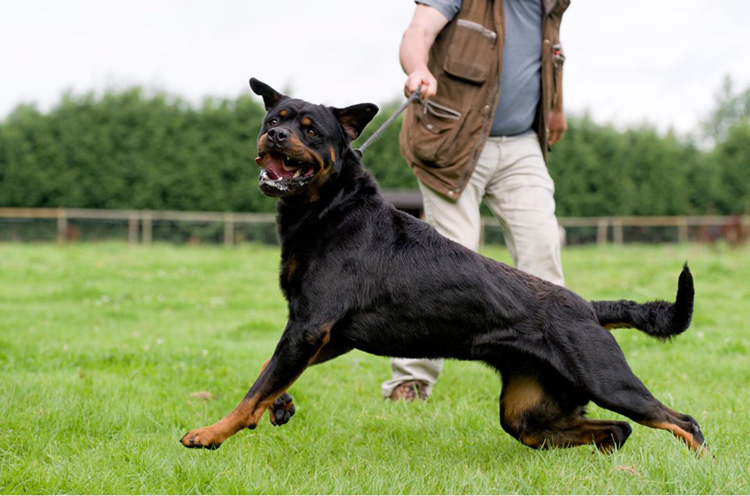Dogs react to things which are scary, exciting or unusual. Common things are other dogs, noisy traffic, children on scooters, strangers walking towards you and wildlife (oh, those squirrels!).
We understand that walking a reactive dog – that is one who reacts strongly with barking and lunging – can be stressful, embarrassing even, but it is very common and does take a long time to improve.
Being consistent is important, but also don't berate yourself if you didn't quite get through it as smoothly as you wanted – both you and your dog are learning with this one!
Gaining attention
It is very important to gain your dog’s attention before they have started to react, so you may have to get silly to make yourself more interesting than whatever you are avoiding. Try being very animated and speaking excitedly, walk in zigzags, offer a toy or ask them to perform commands for a treat.
Randomise the method you use to gain their attention so that they do not become used to one particular thing. Also gain their attention at random points throughout the walk so that they do not learn that you acting silly means that something is coming!
Your reactions count too!
Walk past the dog/traffic etc calmly and confidently, giving the dog as much space as possible. Praise your dog if he is behaving well but ignore him if he is barking, growling or jumping. Keeping the lead at a steady tension walk him on past – don’t drag but be persistent – it is about helping them make the correct decision to move on. It is very important to praise your dog the moment they start to come with you willingly.
If your dog reacts – and sometimes you just can’t get enough space or someone suddenly appears – ignore the barking and lunging and take your dog away as quickly and calmly as possible.

Use the right walking gear
If your dog lunges with the lead attached to their collar, they risk damage to the delicate neck area at the front and twisting along the spine. We always recommend a harness for any dog, but it is especially important for dogs that pull or may lunge. Get one that is well-fitted and they cannot escape from however much they twist about.
Never use a choke chain collar, half check, prong or pinch collar. All of these cause pain and damage to your dog's neck.
Extendable leads don't give you enough control of your dog's position and can easily be dropped. If you want a lead that also gives your dog more freedom in quiet times then use a 'long line' which you loop in and out.